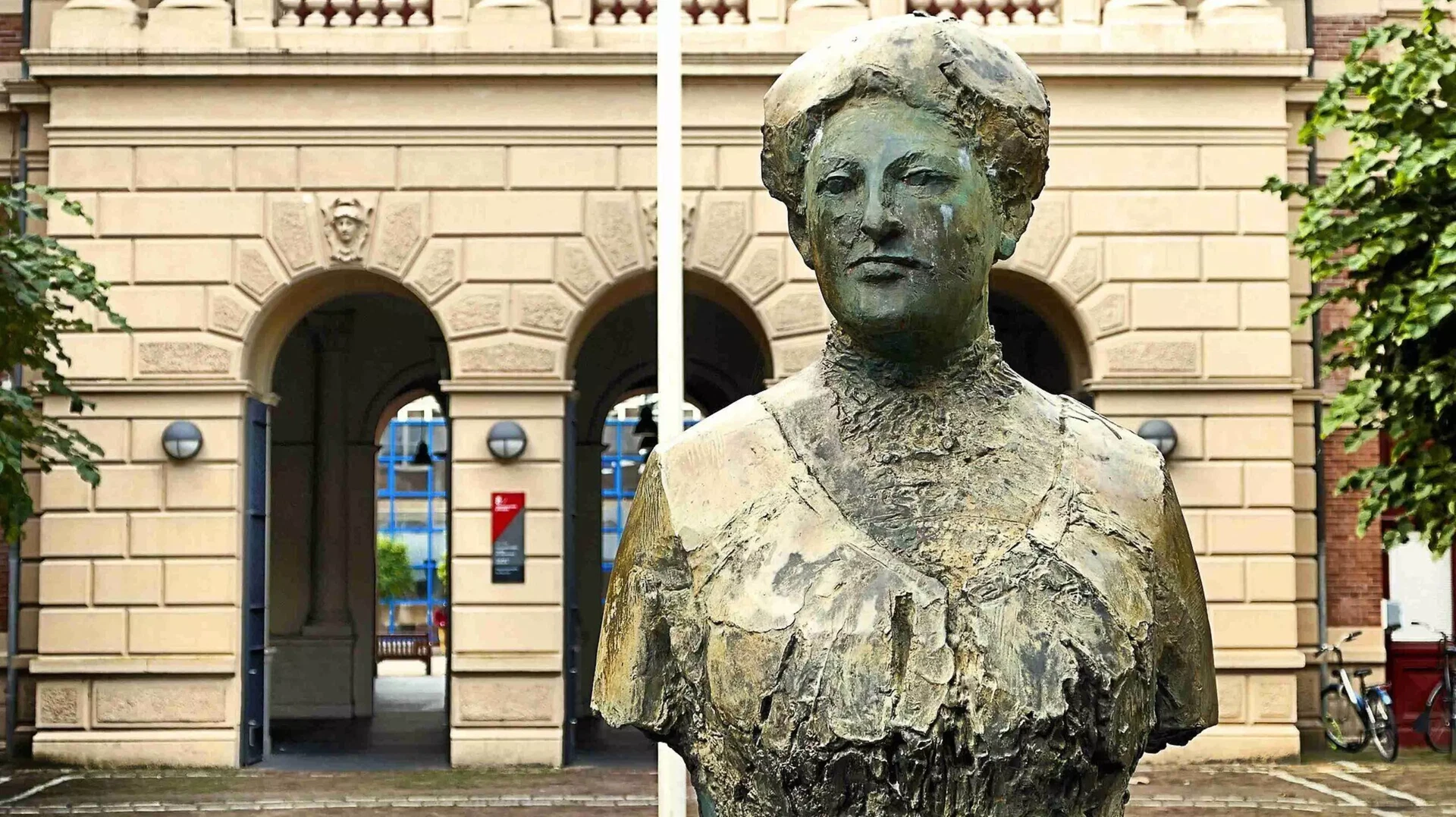From
January 15, 2026
Theresia van der Pant
To
May 2, 2026
0
From
January 15, 2026
To
May 2, 2026

January 15, 2026 - May 2, 2026
Theresia van der Pant
Theresia van der Pant (1924-2013) is among the most important Dutch post-war sculptors of the 20th century. She mainly created abstracted animal sculptures in a figurative form, beautifully rendered in bronze or stone. Animals were her favorite subject; she studied them extensively in Artis to capture their essence. She did not depict them as individuals but created images in which the characteristic shapes and postures determine the composition. "Animals do not pretend or pose, and that gave them a certain freedom," said Van der Pant. Giraffes, seals, fish, bison, and especially birds are part of her oeuvre. Many of these sculptures are still on display in public spaces.
Portraits of people were the exceptions in her work. She sculpted the heads of composers like Monteverdi and Stravinsky, figures with whom she felt a strong affinity. Her most famous sculpture is the equestrian statue of Queen Wilhelmina on the Rokin in Amsterdam, in which she beautifully combined human and animal.
Education and Development
Theresia van der Pant completed a two-year preparatory course at the Rijksnormaalschool voor Teekenleraren, which quickly granted her access to the Rijksakademie van Beeldende Kunsten in Amsterdam in the mid-1940s. In 1950, she worked for some time in the studio of the Belgian sculptor Oscar Jespers in Brussels. He taught her, among other things, to develop her visual memory, a skill that later proved very beneficial. From then on, she sculpted and drew only from memory after extensive observations.
Her breakthrough came in 1953 when she won second prize at the prestigious Prix de Rome for Sculpture. She took up a small studio on the island of Wittenburg in Amsterdam and became a member of the artists' association Arti et Amicitiae. Soon she received commissions from various municipalities for animal sculptures in public spaces.
Teaching and Lifetime Achievement Awards
From 1965, Van der Pant taught stone carving at the Rijksakademie, where she was appointed professor of the sculpture department in 1979. She retired from the academy in 1982. In the same year, she married artist Nol Kneulman and exchanged her studio on Wittenburg for a home on the Plantage Muidergracht, where she had a larger workspace and a separate drawing studio.
In 1987, Van der Pant received the Judith Leyster Prize, a lifetime achievement award for female artists. Two years later, she was honored with a retrospective exhibition at the Frans Hals Museum in Haarlem. On the occasion of her 65th birthday, this was later shown in her birthplace Schiedam.
At the age of 82, Theresia van der Pant had to end her sculpting practice due to health reasons. She remained active as a draftsman until old age, often working in pastel and ink.
Exhibition and Publication
Museum Beelden aan Zee will display a special selection of her work in the Cabinet and Sea Hall from January 16 to May 3, 2026. The exhibition is curated by Joost Bergman and Camée van Blommestein.
Simultaneously, Theresia van der Pant will be published as part 12 in the series of Monographs by Museum Beelden aan Zee (edited by Dick van Broekhuizen, with contributions by Claartje de Loor). This publication contains articles about her life, sculptures, and drawings, as well as an oeuvre catalog.